#from石川
Explore tagged Tumblr posts
Text

生存組×レベルアップダンス(スーパーマリオRPG)
DR Survivors’ Level Up Dance (Super Mario RPG)

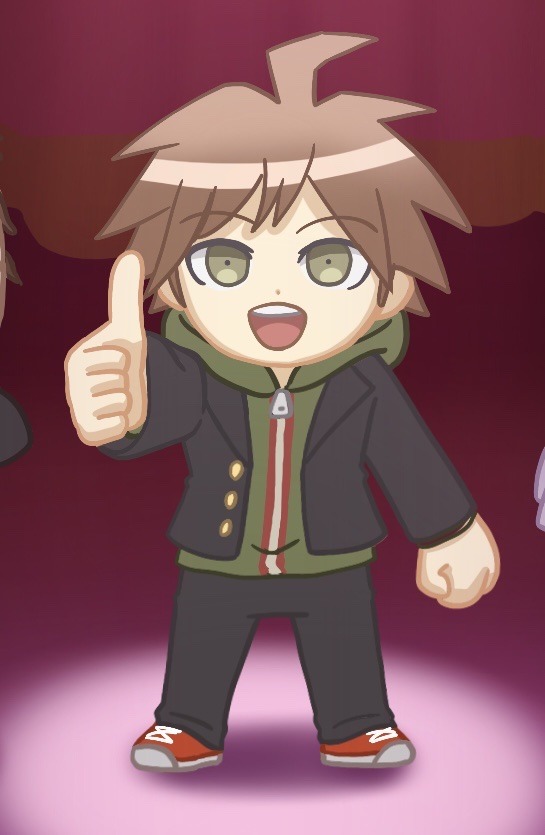



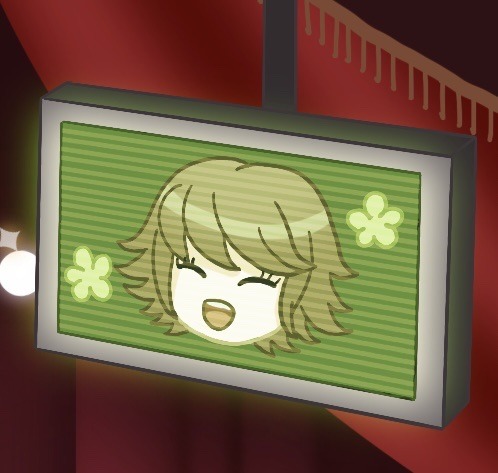
#my art#ダンガンロンパ#danganronpa#左からクッパガミ→マロガクレ→マリオマコト→ジーノギリ→ピーチヒナです#From left to right BowserGami MallowGakure MarioMakoto GenoGiri PrincessPeachHina.#(腐川はこの画面にはいないけど多分戦闘中はクッパガミの武器として活躍してる)#(There is no Touko in this party but I assume she contributes as BowserGami’s weapon…)#またはヨッシーみたいにアイテムで呼べる(なお十神しか呼べない)#Or BowserGami can summon her using an item like Yoshi.#元ネタのダンスがまじで可愛すぎて見るたびに毎回可愛いって言ってた#I kept saying “Kawaii!!!” every time one of the characters leveled up…#本当はアニメーションさせたいけど流石にその気力と時間がないので誰か動かしてほしい(他力本願)#I wish someone to create an animation of this party doing the level-up dance!
33 notes
·
View notes
Text
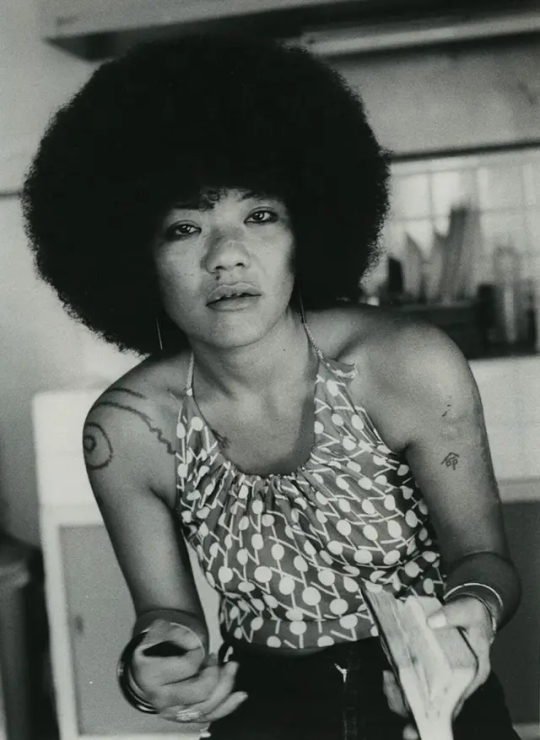
by Mao Ishikawa / 石川真生 From the book: RED FLOWER, THE WOMEN OF OKINAWA / 赤花 アカバナー、沖縄の女 (2017)
65 notes
·
View notes
Text
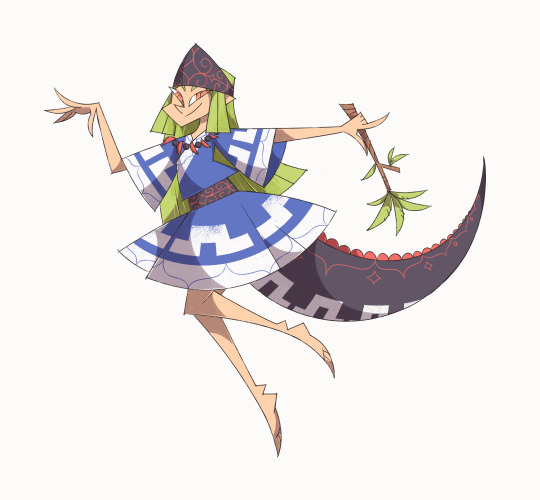
Last second character prediction for Fossilized Wonders (ignoring that a character was just revealed anyway lol): Living Fossil from the Age of the Gods - 神代の生きた化石 Kamui Mukawa (鵡川 冠依, Mukawa Kamui) Based on Kamuysaurus, a hadrosaurid dinosaur known from the Hakobuchi Formation of Hokkaido in Japan, named after the Kamuy of Ainu belief.
91 notes
·
View notes
Text

I started using this book to help me study kanji alongside the TokiniAndy Anki deck (see this post). I really like the visual breakdown of the kanji pictograph, though I wish there were a few more rows of squares to practice writing (and that the squares had dotted lines inside them).
For reference, here is the list of kanji that are in that Anki deck. These kanji are pulled from a combination of N5 and Kanken level 10 lists.
一 二 三 口 四 五 六 七 八 九 十 日 月 白 百 千 万 円 上 下 人 火 土 水 木 王 玉 国 金 休 目 見 耳 止 足 正 車 手 子 字 学 田 力 男 女 友 父 母 毎 分 今 午 年 寺 時 小 大 犬 半 前 来 川 山 出 入 天 夕 名 化 花 竹 早 草 林 森 交 校 言 語 話 売 読 本 文 書 右 左 立 音 問 間 聞 生 青 赤 先 石 糸 後 気 空 高 何 町 村 中 虫 行 良 食 雨 電 外 北 南 西 東 長
As of this morning, I'm almost halfway through this list! 84 more meaning cards to go, and then I'll start seeing sentence cards!
My goal is to study 5 new cards per day in the kanji deck and the vocabulary deck; I'm doing them in tandem to reinforce kanji pronunciations and review previously learned vocabulary. By focusing on the meaning of the kanji and practicing writing, I'm able to tie the meaning to two pieces of information to help solidify it in my memory: 1) the mnemonic if I use one, and 2) the stroke order of the kanji. Some of the stories in the kanji deck are not super memorable for me, so I'm using some of my own mnemonics.
I much prefer this method over WaniKani because:
My studies have been more consistent. 5 cards per deck (10 total) per day, in the morning before work.
I've been less stressed out. I am learning the meanings of individual kanji first, and not worrying about all their readings.
My vocabulary is growing. I am reviewing vocabulary I already know, and learning new words. (I guessed that 閉まる means "to close" based on the context of the sentence it was in! This made me so happy! 😭)
I've started recognizing kanji in words I already know. For example, I learned 末 today from the aforementioned book (I haven't come across it in the Anki deck yet). I already know the vocabulary word 週末 (this weekend) and how it's pronounced (しゅうまつ). Thus, all I need to worry about right now is to remember that 末 is pronounced まつ in this particular word, and not stress about what the other readings of 末 are. I can learn that later, when I see vocabulary words that have it.
Once I finish learning the meanings of the kanji, the deck will start giving me sentence cards that contain vocabulary words using those kanji. This will help me learn kanji readings in the context of vocabulary words, rather than lone pronunciations.
This last point is something that really bothered me about WaniKani. For example, 丁 was connected to the character of Mrs. Chou to remember the reading ちょう. Although I remember this mnemonic, how can it be connected to 町, which contains 丁 but has a different pronunciation (まち)? Turning Japanese sounds into words (e.g. りょく→ rock) is tricky, and I'd rather spend my time practicing writing or learning words rather than stretching my imagination to come up with these farfetched mnemonics. 🤷♀️

78 notes
·
View notes
Text

#石川県応援企画
#IshikawaPrefectureSupportProject
A project to support the affected areas
I would also like to buy delicious food and goods from Ishikawa Prefecture!
124 notes
·
View notes
Photo

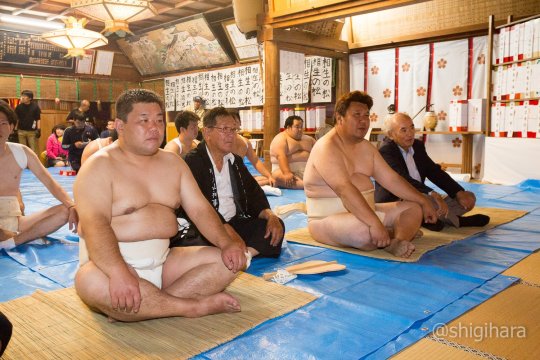

唐戸山神事相撲 - 唐戸山相撲場, 南中央町, 羽咋市, 石川県 Karatoyama Shinji Sumo - Karatoyama Sumo Field, Minamichūō, Hakui, Ishikawa
Photos from; shigi ™ (@shigihara) - X/Twitter
104 notes
·
View notes
Text
Catalog of LBFaD drama name origins
Mythology -> book -> drama
Dongfang Qingcang / 东���青苍: The origins of this name are hotly contested, and to be honest the only hypothesis I remember is the Azure Dragon of the East. East being "Dongfang," and the dragon itself being alternatively called "Qing long" and "Cang long." (x)
Haotian Tower / 昊天塔: The tower where DFQC was imprisoned in, in both media. There's no Haotian Tower in mythology, but "Haotian God" is one of the names of the emperor of heaven. (x)
Ninth You / Jiuyou / 九幽: One name for the mythological netherworld, the capital city of the Moon Tribe in the drama. The capital city of the devil tribe in the book. (x)
Sansheng / 三生: The name comes from the "Three Lives Stone" (sansheng shi 三生石), which represents a lot of things in Chinese tradition, but probably the most salient being a rock in the underworld near the Oblivion River. In the novel universe, the rock is graffitied with the names of the ones the dead passing by wished to see most. The stone seems to have transformed into human form in the first book of the series, succinctly titled Sansheng, which tells the love story between Sansheng and Moxi, the novelverse God of War. (x)
Siming / 司命: A folk god, and usually male, who oversees human fates. In the CLJ novel she is responsible for writing the Fate Books. (x)
Xirang / 息壤: Mythological self-expanding-and-growing soil. Although it plays a key role in the book, it only appears in a throwaway line in the drama, when Changheng suggests building XLH a new body out of it. (x)
Mythology/literature/history -> drama
Chengying Sword / 承影剑: One of the ten famous swords of China, in historical and literary tradition. From the Spring and Autumn Period. (x)
Chonghua / 重华: Chonghua is the given name of a legendary emperor of China. (x)
Haotian Matrix / 昊天阵: "Haotian God" is one of the names of the emperor of heaven. (x)
Hellfire / 业火: A Buddhist concept, the fires of karma. (I'm pretty vague on what it actually is and where it exists.) In the book, DFQC's powerful fire is usually just called "raging flames" (lieyan 烈焰), and it's red instead of blue. (x)
Liyuan / 澧沅: Li and Yuan are two of the four big rivers that flow through Hunan. Coincidentally, also the names of two of the four rivers that flow into Shuiyuntian, that flooded when DFQC broke the pearl. (x)
Love Tree / Seven-Emotions Tree / 七情树: The name "seven-emotions tree" comes from the phrase "seven emotions and six desires," (qi qing liu yu 七情六欲). The exact emotions and desires this refers to differ based on school of thought. (x)
Lord Dong / 东君: A deity often paired with Yunzhong-jun as one of the two primordial gods. Seems to be a sun deity. His name literally means "Lord East." (x)
Lord Yunzhong / 云中君: A god from mythology, often paired with Lord Dong as one of the two primordial gods. Sometimes interpreted as a woman. (x)
Oblivion River / Wang Chuan / 忘川: A river in the land of the dead. To cross it, you must first drink a soup that makes you forget your past lives. (x)
Qu Shui / 曲水: Literally "winding waters," the name of Xiao Run's pageboy might come from the upper-class drinking game "Qu Shui Liu Shang" 曲水流觞, in which players "wait by a winding stream and compose poems before their cups full of rice wine float down to reach them." His nickname Ququ'r is phonetically very similar and means cricket. (x x)
Return to Ruin Realm / Guixu Zhi Jing / 归墟之境: "Guixu" was a place far to the east, that every body of water eventually emptied into. The characters break down into "return (to)" and "ruins." The "Zhi Jing" makes it "Region of Guixu" or "Guixu Area." (x)
Tai Sui / 太岁: A folk deity, but not necessarily evil. (x)
Xuanwu God / 古神灵玄武: Xuanwu is a constellation representing a tortoise-snake spirit. (x)
Xunfeng / 巽风: His name most likely comes from the "xun" trigram of the Eight Trigrams, of which the element is wind, or "feng." (x)
Yingzhao / 英招: Legendary creature that has the body of a horse, the face of a man, stripes like a tiger, and wings of a bird. Not like our waddling ball of fur at all. (x)
Yunmeng Lake / 云梦泽: One of the largest lakes in China in ancient times, now mostly nonexistent. (x)
Book -> drama
Bone Orchid / Gu Lan / 骨兰: It has more of a dried-vine aesthetic in the book.
Chidi Nüzi / 赤地女子: The god of war of the heavenly realm, in both media. DFQC's nemesis and the object of A'Hao's obsession.
Dayu Battalion / 大庾兵: Only mentioned once in the drama, along with the Tieyu Battalion 铁羽兵, as forces that Shangque has mobilized in response to Xunfeng's insurrection. Dayu's the name of DFQC's adorable (to me) pet sky/sea serpent.
Destruction of Heaven / Ruins of Ten Thousand Heavens / Wan Tian Zhi Xu / 万天之墟: A formless place where Siming can be found, in both the drama and the book. The book series further specifies that the Destruction of Heaven sits above the Three Realms and the Endless Desolate City (无极慌城 wu ji huang cheng) below.
Dieyi / 蝶衣: Ronghao's loyal right-hand woman is also present in the book.
Fairy Execution Platform / Zhu Xian Tai / 诛仙台: Where Changheng is to be executed after talking back to Yunzhong. In the book this was a platform over a mass of the book equivalent to evil qi/suiqi, which XLH was cast off from, almost getting eaten alive by the evil qi.
Fate Books / Mingbu / 命簿: The combination of these two characters seem to be an invention of the novel, and are records of the destinies of living people collected and administered by the land of the dead.
Fate Tree / Mingge Shu / 命格树: "Mingge," in both the novelverse and in the Love You Seven Times drama, are the stories high immortals (in CLJ's case, Siming) write to direct the fate of mortals. I'm not clear on the distinction between mingbu and mingge in the CLJ book.
Lucheng / 鹿城: In the book, a militarily important city of the Jin Dynasty, although the drama has styled it more into the Tang Dynasty, some thousand-plus years later.
Ronghao / 容昊: In the book, the wheelchair-bound master of the demon commerce city who's later revealed to be Chidi's obsessed student. We're not given the first character of his name in the book; it only ever calls him A'Hao.
Shangque / 觞阙: The name of the prime minister of the devil realm in the book, horrified by DFQC's erratic behavior while his body is being partially controlled by XLH. Show!Shangque's personality likely came from Dayu, Book!DFQC's overpowered flying serpent who follows him around like a loyal dog.
Shuofeng Sword / 朔风剑: "Cold northwest wind" sword, it's Chidi Nüzi's weapon in the book and the drama. It stays in sword form in the book, but becomes a geographical feature and a seal in the show.
Thousand Dreamland / Thousandfold Illusion / 千重幻境: A realm of endless very similar illusions that Ronghao/A'Hao tries to trap DFQC in to prevent him from finding XLH, in both media.
Xiao Lan Hua / Orchid / 小兰花: Our heroine!
Xie Wanqing / 谢惋卿: One of Chidi Nüzi's mortal incarnations in both media. However, in the book she is a general who's betrayed by the man she loves, an ordinary mortal, while XLH and DFQC watch.
Misc
Changheng / 长珩: Changheng's not in the book, but the book does have a troublemaker by the name of Changming 长命 who is DFQC's biggest "love rival" (he's like ten years old), and I wonder if the "Chang" part of Changheng's name comes from Changming.
Flying Fairy Pavilion / Life-Ending Pavilion / 飞仙阁: A reference to Xie Wanqing's real identity as the Fairy God of War. Also a euphemism for death.
Haishi / 海市: Conceptually, comes from the demon/nature sprite city, yaoshi 妖市, in the book. For the drama they got rid of the demon part and called it Haishi, Sea City.
Tongyun / 彤云: Xie Wanqing's maid, and an actual word that refers to red clouds or "dark clouds before snow." (x)
Xiao Run / 萧润: I'm not sure the Run part of his name is a reference to anything, but the Xiao is probably there to make the Xiao-lang wordplay work. (x)
Yannü 盐女 and Cangyan Sea 苍盐海: The "yan" is the same as in "Yannü." Which came first, I wonder? (The "cang" is the same as in Dongfang Qingcang.)
Sans Data
I do not know any special origins of, or was too lazy to look up:
Black Sash 黑杀斩, Bone-Devouring Spikes / Frost-Salt Nails 噬骨霜盐钉, Cangyan Sea 苍盐海, Changle Street, Cloud Shadow Mirror 云影镜, Danyin 丹音, Dark Pine Forest 暗松林, Dream of Nine Serenities / Jiuyou Dream 九幽一梦, Eternal Flame 长明火, Evil Qi / Suiqi 祟气, Firefly stone 奇幻流萤石, Fountain Palace 涌泉宫, Four-Water Pearl 四水宝珠, Fuju Cave 弗居洞, Glazefire 琉璃火, Granny Tie 铁婆婆, Green Flame Wine 绿焰酒, Hall of Divine Waters / Shenshui Ting 神水厅, Heart-Hidden Pin 藏心簪, Hidden Treasures Shop 藏珠斋, Jieli 结黎, Jinling, Jingyiya Teahouse 静逸雅轩, Karma Jail / Karma-Spanning Abyss 渡业渊, Liufang Pavilion 留芳阁, Night-Stream Building 夜溪楼, Northern Sea / Beiming 北溟, Primordial spirit 元神, Qingchuan 青川, Ranxi Flower 燃犀花, Shaking Light Peak 摇光峰, Shuiyuntian 水云天, Shuyu Forest 漱玉林, Silent Moon Palace / Jiyue Palace 寂月宫, Silver Lake 银湖, Soul Transformation Cauldron 化魂鼎, Soul Transformation Grounds 化魂墟, Southern Fairyland / Extreme South Fairy Continent 南极仙洲, Spirit Lock Gate 灵锁门, Spirit-Shattering Abyss 碎灵渊, Spirit Stones 灵石, Tianji Mirror 天极镜, Universe Pills 无极乾坤丹, Wind Prison 风牢, Wind Warriors, Wuqi 巫芑, Wuxian Clan / Witch-Salty Clan 巫咸族, Xilan 息兰, Xingluo 星落, Xishan 息山, Xiyun 息芸, Xuanshuang Whip 玄霜神鞭, Xuanxu Realm / Mysterious Realm 玄虚之境, You Jade Ring 幽玉戒, Yujing 玉京
Much thanks to sassybluee's Reference for Fic Writers.
This post is subject to change. Additions, corrections, and discussion welcome.
67 notes
·
View notes
Text
石川県
Japanese Prefectures: Chūbu - Ishikawa
都道府県 (とどうふけん) - Prefectures of Japan
Learning the kanji and a little bit about each of Japan’s 47 prefectures!
Kanji・漢字
石 いし、セキ、シャク、コク stone
川 かわ、セン stream, river
県 ケン prefecture
中部 ちゅうぶ Chūbu, Central Japan, the central region of Japan
Prefectural Capital (県庁所在地) : Kanazawa (金沢市)
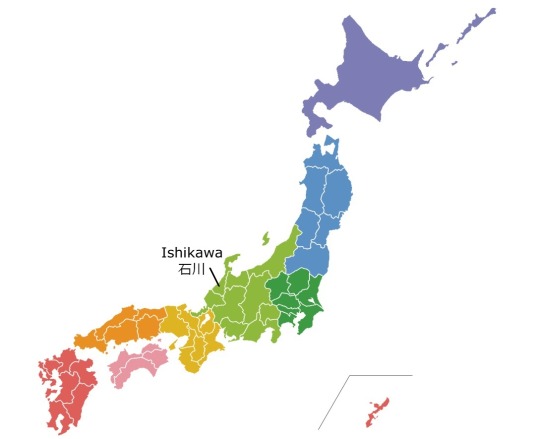
Ishikawa Prefecture lies along the scenic north coast of Honshu, the main island of Japan, and is part of the central region, known as Chūbu (中部) or Hokuriku (北陸). Ishikawa combines contemporary art and ancient crafts, stunning ocean or mountain views, relaxing hot springs and traditional Japanese inns. Kanazawa boasts a vibrant geigi (芸妓) culture (think geisha), a bustling seaport in Kaga, and mountainous terrain in the Hakusan region.
This region was hit by the 2024 New Year's Noto Peninsula earthquake, with the most devastation occurring in the northern part of the peninsula. Many businesses and much of the economy relies heavily on tourism, and now is a good time to visit to assist in revitalizing the community, especially in minimally affected areas such as Kanazawa and Kaga.
Recommended Tourist Spot・おすすめ観光スポット Kutani Ceramic Art Village - 九谷陶芸村

Kutaniyaki (Kutani ware) (source)
Kutani ware is probably the best known in Ishikawa and the Noto peninsula. There are many kutani ware souvenirs to be found in Ishikawa, and you can even take classes to make your own pottery. Kutani ware contains five distinctive colors: red, yellow, green. purple, and blue. The rules for Kutani ware are few, so the freedom allowed in creating the pottery is practically endless. The high quality of the porcelain stone found in Ishikawa further lends itself to the distinctiveness of the pottery. In the city of Nomi you can find the Kutani Ceramic Art Village, which is also home to a museum documenting the history Kutani ware and how it is made. Nearby is Cerabo Kutani, a workshop where you can make your own Kutani ware pottery.
The history of this pottery dates back to 1655, when the first daimyo feudal lords of what was then the Daishoji domain wanted to make the most of the porcelain stone found in the area. A gold smelter was sent to Saga Prefecture to learn pottery, and when he returned he opened a kiln in the village of Kutani. This pottery became known as Ko Kutani, a predecessor to Kutani ware in its present form. This kiln operated for 50 years, and then closed down, for reasons unknown to historians.
The next kiln was opened in 1805, when a craftsman skilled in Kyoto pottery came to Ishikawa with his apprentice. The apprentice found the porcelain stone that is local to the area, and the pottery that they created became the modern day Kutani ware.
Regional Cuisine - 郷土料理 Kanazawa Oden - 金沢おでん

Kanazawa oden (source)
Oden is a popular traditional street food dish that can be traced back to the Edo period (1603-1868) in Japan. It is traditionally a dish of various ingredients simmered in soy-based broth and the simple yet warm and nourishing dish can still be found all over Japan today.
Kanazawa oden is a regional variation from the city of Kanazawa in Ishikawa, and is particularly distinctive from other types of oden due to the broth, which is carefully crafted from a blend of soy sauce, dashi (stock made from kombu seaweed and bonito flakes), and other seasonings such as mirin, sake, ginger, and garlic. Kanazawa oden ingredients include crab (only available in the winter!), plum shell conch, and fish balls. Kaga vegetables such as gensuke radish and wheat gluten are also staples in this dish.
Although Kanazawa oden can be enjoyed year-round, to get kani-men or stuffed crab shell you need to visit in the winter months.
Ishikawa Dialect・Ishikawa hougen・石川方言
The dialects of Ishikawa Prefecture are Kaga dialect (加賀弁, Kaga-ben) spoken in the southern part of the prefecture, and the Noto dialect (能登弁, Noto-ben) spoken in the northern part. There are also multiple dialects within each of the primary dialects, thanks to the mountains separating the villages. The below examples are primarily Kanazawa dialect.
1. あんやと、あんがと anyato, angato
Standard Japanese: ありがとう (arigatou) English: thank you
ああ、あんやと。 ah, anyato
ああ、ありがとう。 ah, arigatou
Oh, thank you.
2. ~しまっし ~shimasshi
Standard Japanese: ~してください、~しなさい (~shite kudasai, ~shinasai) English: please do ~, do ~
そこへ座るまっしね。 soko e suwaru masshi ne.
そこへ座ってくださいね。 soko e suwatte kudasai ne.
Please go ahead and sit there.
*Note: The masshi structure is the most famous Kanazawa dialect. This is also the catch phrase for visiting Kanazawa: 来まっし、金沢! Kimasshi, Kanazawa! (Come to Kanazawa!)
3. ほうや、ほうや! (houya, houya)
Standard Japanese: そうだそうだ (sou da sou da) English: that's right, that's right
A: だちゃっかんわいね。 B: ほうや、ほうやね。 A: dachakkannwaine. B: hou ya, hou ya ne.
A: だめだね。 B: そうだ、そうだね。 A: dachakkannwaine. B: sou da, sou da ne.
A: That's not good, is it? B: That's right, that's right.
4. あゆるしゅう、あゆっしゅ (ayurushuu, ayusshu)
Standard Japanese: よろしく (yoroshiku) English: nice to meet you, I'll leave it to you, please do etc.
A: デザートもたのむん? A: dezaato mo tanomun? B: あゆるしゅう。 B: ayurushuu.
A: デザートも頼むの? dezaato mo tanomu no? B: よろしく。 B: yoroshiku.
A: Are we ordering dessert too? B: Please do.
5. なーんも、なーん (naan mo, naan)
Standard Japanese: いいよ (ii yo) English: it's ok, don't worry
なぁーん、いいがや。 naan, ii ga ya.
いいえ、���配しないで。 iie, shinpai shinai de.
No, it's ok, don't worry.
More Ishikawa dialect here (JP).
#japanese prefectures#日本語#japanese#japanese language#japanese langblr#langblr#studyblr#都道府県#石川県#ishikawa
34 notes
·
View notes
Text
There's a fan novelisation of "Rudra no Hihou". It's really interesting. It was made by かげ (Kage), who also did a lot of amazing fanarts (shame that most of them seem to be lost).
The novelisation is in Japanese, so you either have to know the language, or use a translator (like I do).
You can find the novelisation in Kage's recent blog. It would be nice if you tell them, how much you enjoyed their work. I thought it was also posted on Pixiv, but it wasn't. Moving on.
I hope it's the right link, because I can't even enter Pixiv anymore. It's been banned here for years, but there used to be the other ways to access the website. Not anymore.
Spoiler: it wasn't the right link. This is another novelisation, and Ishikawa Ouichirou is the writer. Check it out, too, because it is definitely an interesting take on the game's story. Also, don't forget to show your appreciation to the author. Thanks to @invisibletinkerer for clarifying.
Okay, back to the topic!
Kage also did an extensive work collecting the quotes and lines from the games like "Persona 2", "Mystic Ark" and, of course, "Rudra no Hihou". You can also read it in their blog.
Collecting quotes took a number of years. I remember finding these on their old website. But it was incomplete back then. And now we can fully enjoy it in the blog. Finally.
Also, don't forget to check Kage's above-mentioned fanarts through Wayback Machine. Well, at least the ones that could be retrieved. There's probably more somewhere, but it will take time to find it all.
Also, the link section has an interesting list of Rudra-based websites. Most of them can still be available one way or another.
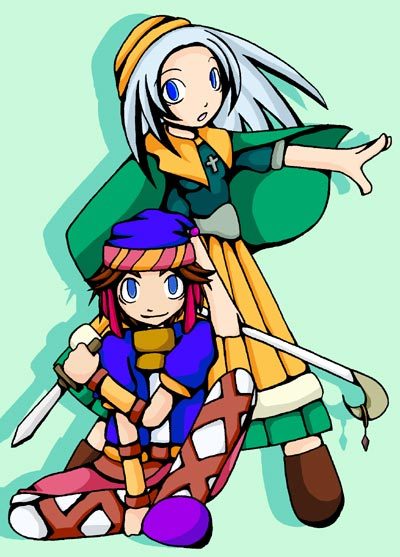

#rudra no hihou#ルドラの秘宝#rudora no hiho#rudora no hihō#rudra no hiho#rudra no hihō#rudra's treasure#treasure of the rudra#treasure of the rudras
12 notes
·
View notes
Text
Naming lines
One thing Kyoto Okiya are famous for are their naming lines. Most Okiya stick to one or two. For example, Nishimura has "-ko" (子), Nakasato uses "Nao-" (尚). This is much rarer outside of Kyoto, partially due to smaller sizes in general Geisha population, smaller Okiya/Ochaya, or it's just never been this way. But there are exceptions, and I'd like to present some here: Tanigawa たに川 Ochaya in Osaka-Nanchi has "-zuru" (鶴) Examples: Momozuru 百々鶴, Fukuzuru 福鶴, Orizuru おり鶴 Hôsengiren 鳳川伎連 Okiya in Gifu has "Kiku-" 喜久 and "-ji" 次 Examples: Kikuji 喜久次 (both naming lines originate from him), Tamaji 多満次, Kikutomi 喜久富 Hamacho 濱長 Ryotei in Kochi doesn't strictly use naming lines, but has a recurring theme with "-chiyo" 千代 Examples: Yukichiyo 由喜千代, Yumechiyo 夢千代, Mamechiyo 豆千代 both the now defunct Okiya Ito-seki 伊藤席 and Kikusuiro 菊水楼, and the only currently active Okiya in Nara, Ono-seki 大野席 use "kiku" (菊) both as suffix and prefix Examples: Kogiku 小菊, Hinagiku 雛菊, Kikuzuru 菊鶴 Kawai 河居 Okiya in Tokyo-Asakusa uses "-aki" (晶) Examples: Fujiaki ふじ晶, Komaaki こま晶, Tamaaki たま晶 Kawamura 河村 Okiya in Tokyo-Asakusa uses "Chi-" (千) Examples: Chima 千万, Chizuru 千鶴, Chiaki 千晶 (Kawai's "aki" naming line originates from her) Fujihana 藤花 Okiya in Tokyo-Mukojima uses "Na" (南) Examples: Hinano 日南乃, Natsuki 南月, Yurina 悠梨南
Momofuku 桃福 Okiya in Tokyo-Mukojima uses "Ka" (加) Examples: Momoka 桃加, Erika 絵里加 Sengoku 千石 Okiya in Tokyo-Mukojima uses "ka" (香) Examples: Soraka そら香, Utaka うた香, Umika 海香 Kikuyoshi 菊よし Okiya in Tokyo-Hachioji uses "Ko-" (小) Examples: Kotarô 小太郎, Kotone 小都音, Komaki 小舞姫 Fuminoya ふみ乃家 Okiya in Tokyo-Hachioji uses "-no" (乃) Examples: Mayuno まゆ乃, Otono 音乃
25 notes
·
View notes
Text
Pulptober 2024 Day 24-Team of Elites-Lupin III gang

I stumbled across this funny activity that based on Pulp Hero prompts and it seems to allow for anyone participation(hope I didn't misunderstand),so I took the liberty of coming uninvited(And I'm obviously posted late).I think Lupin the Third is one of the most pulp-style long-going anime series that still going now,and one of the most common story templates is how the protagonist and his companions become a team of adaptive anti-hero,so they deserve to be put under this topic.
This adventuring team consists of four capable criminals who are equal and independent,Lupin the third is usually the mastermind and the one leading the action,but he isn't a real leader and the gang isn't named after him or anyone else.All of them can carry out theft or other criminal work alone.Compared with professional criminal groups with clear division of labor,they are more like a family of professional thieves with their own specialties,and it's interesting to see how they work closely together while maintaining their own independence and sometimes conflicting for that.
Daisuke Jigen(次元大介) is the closest one who is literally an assistant of Lupin on the gamg,even though he actually isn't,and he is definitely the member who drives and smokes with Lupin on screen the most.The two interacted so frequently and naturally that some fans jokingly called Jigen the gayest man alive(On the other hand many fans believe they're bisexual).He is the best gunman of them and known for his extraordinary shooting ability and familiarity with various firearms,on the contrary he rarely shows his (not bad) hand-to-hand combat ability.I think sometimes people put too much emphasis on his feuding moments with Fujiko,he was often angry at her betrayal,but most of the time he did not blame her any more than Lupin and Goemon did except verbally.
Goemon Ishikawa XIII(石川五ェ門) is a character who is a symbol of Japanese/East-Asian culture that deliberately placed in this Westernized(for the Japanese at the time) gang,although it's far from a stereotype,he is undoubtedly the member who has the most clearly culture marked,that includes a samurai/ronin costume,a Japanese sword and his Iaidō skills,which makes him the only member who does not use firearms and has a irreplaceable skill(swordsmanship).He is often as a handy member to cut through bullets,obstacles or various things in front of them,and the one most often leaves the team for personal reasons(Except Fujiko when she betrayed them).
Fujiko Mine(峰不二子) is the regular femme fatale in this series,but in my experience,even few of characters of this type could be like her that able to maintain the companionship with a gang she betrayed multiple times,especially considering she isn't the leader.Fujiko is a wind card between Lupin gang and their opponents,she often betrays them,also often betrays their enemies and returns to the gang after considering the situation,or is rescued by them after being betrayed by their enemies,and fairly,working with them in good faith many times.Regardless of her initial decision,finally she always ends up siding with the gang at critical moments since of luck or intentionality.
Koichi Zenigata(錢形幸一) is the Inspector Ganimard of Lupin the third,he is an Interpol police officer who has traveled around the world for many years to hunt down Lupin III,but they respect each other and have a special friendship with each other.Of course Zenigata can't be a real member of the Lupin gang,but like other empathetic inspector characters,he is often involved in their fights with other criminal forces,and is usually willing to join them in fighting against more evil elements for the sake of morality and justice,whether both are acting independently or actually working together.This happens so often that make Zenigata deserves to be considered a special member of the gang,and becomes the best and worst cop:he is unable to arrest Lupin most of the time,but thanks to this he has achievements in fighting crime that ordinary police officers cannot match.

#pulp heroes#pulptober 2024#Team of Elites#Lupin III#Daisuke Jigen#Goemon Ishikawa XIII#Fujiko Mine#Koichi Zenigata#I'm also hope to post about Hero for Hire but I need more time#Btw the theme song of Lupin III (season 2) maybe the anime theme song with the most version of variations
19 notes
·
View notes
Text
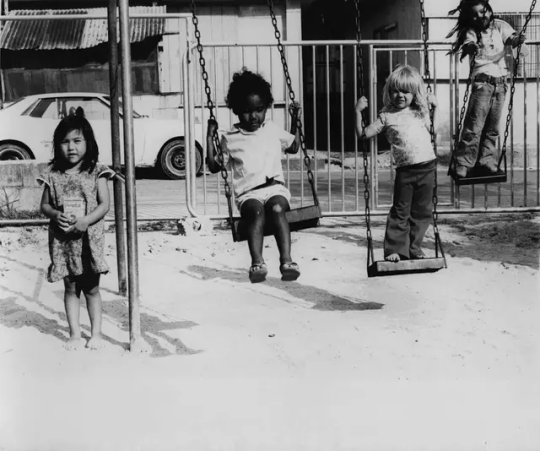
by Mao Ishikawa / 石川真生 From the book: RED FLOWER, THE WOMEN OF OKINAWA / 赤花 アカバナー、沖縄の女 (2017)
53 notes
·
View notes
Text
character surnames and their corresponding real life locations
every single surname that shows up in the story (with one exception) references a location in shizuoka, which is the author's home prefecture. here is a non-exhaustive list of them (some names point to multiple locations, but they're usually in the same general vicinity so it doesn't make much of a difference):
Magmell
Koutarou (& Asumi): Tenjou (天城) -> Mount Amagi (天城山)
This is a case where an alternative reading is used for the character name.
Minato (& Nagisa): Osezaki (大瀬崎) -> Cape Ose (大瀬崎)
Shizuka: Nagaizumi (長泉) -> Nagaizumi Town (長泉町)
Asahi (& Hinako): Yui (由比) -> Yui Town (由比町)
Merged into Shimizu Ward in 2008, which is the location the schoolteacher from the nautilus chapter is named after.
Ran (& Ren): Dogashima (堂ヶ島) -> Dogashima Coast (堂ヶ島海岸)
Haru: Haruno (春野) -> Haruno Town (春野町)
Merged into Tenryu Ward in 2005.
Ryou: Chibata (知波田) -> Chibata Station (知波田駅)
Natsuhiko: Mito (三津) -> Mito Beach (三津海水浴場)
Kiyohamaru
Shinya: Shirahama (白浜) -> Shirahama, Shimoda City (白浜, 下田市)
The descriptor for this location (大字) doesn't have an exact English equivalent but translates to "larger section [of a village]".
Okijirou: Sagara (相良) -> Sagara Town (相良町)
Merged into Makinohara city in 2005.
Extended Cast
Kouyou: Seno (石花) -> Senoumi Plateau (石花海)
Specifically an underwater formation in Suruga Bay.
Schoolteacher: Shimizu (清水) -> Shimizu Ward (清水区)
Yo: Matsuzaki (松崎) -> Matsuzaki Town (松崎町)
Mahiro: Uchiura (内浦) -> Uchiura Gulf (内浦湾)
Also the name of a village that merged into Numazu in 1955, and the name of a different village in Kosai. Not to be confused with the more well-known body of water in Hokkaido prefecture.
Naru: Kitagawa (北川) -> Hokkawa Hot Springs (北川温泉)
Another case of using an alternative reading.
Marin: Yuzuki (柚木) -> Yunoki Station (柚木駅)
Another case of using an alternative reading. There are actually two stations with this name in Shizuoka.
Yume: Itou (伊東) -> Itou City (伊東市)
Aoba: Yagisawa (八木沢) -> Yagisawa Hot Springs (八木沢温泉)
Blind Guest (& Hotaru): Fujinose (藤ノ瀬) -> Fujinose Firefly Park (藤ノ瀬ホタル公園)
Seira (& Aozora): Oomori (大森) -> Oomori Station (大森駅)
This station happens to be directly adjacent to Chibata Station.
Kiyoe: Hamaoka (浜岡) -> Hamaoka Town (浜岡町)
Merged into Omaezaki City in 2004.
Namikazu (& Hanami): Sakura (佐倉) -> Sakura Village (佐倉村)
Merged into Hamaoka Town in 1955.
Hikaru: Yoshida (吉田) -> Yoshida Town (吉田町)
Professor Kanae: Kunou (久能) -> Kunōzan Tōshō-gū Shrine (久能山東照宮)
B&B Owner (& Kairi): Mishima (三島) -> Mishima City (三島市)
Exception
Mikako: Suzuki (鈴木)
No locations found in Shizuoka. “Suzuki” is the most common surname in Shizuoka and was given to Mikako for this reason instead.
#mine#long post#deep sea aquarium magmell#stressed abt school/health so cleaned this up for posting. still missing nagiko but i’ll just update it later when it’s revealed#usual PSA that i cannot read JP. this was just web searching and using the CN fan TL as a reference for the kanji of most names#references
11 notes
·
View notes
Text
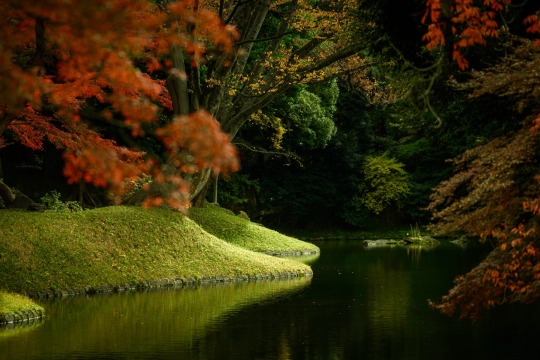
小石川後楽園
It is very important to have such a beautiful Japanese garden in the heart of Tokyo. Due to the weakened yen, Japan has become a very accessible destination for people from overseas. If you were to visit Japan, you would be able to fully enjoy this scenery right away.
73 notes
·
View notes
Text
Sun Wukong's Final Battle
Journey to the West (Xiyouji, 西遊記, 1592) chapter 99 describes the Monkey King's final battle as a fierce, stormy confrontation against demons wishing to steal the hard-won scriptures for themselves. This takes place shortly after the pilgrims and holy texts are dumped into a river by an annoyed river turtle spirit:
Master and disciples had just climbed up the riverbank when suddenly a violent gale arose; the sky darkened immediately and both thunder and lightning began as rocks and grit flew everywhere. What they felt was One gust of wind And the whole world teetered; One clap of thunder And both mountains and streams shuddered. One flash of lightning Shot flames through the clouds; One sky of fog Enveloped this Great Earth. The wind's mighty howl; The thunder's violent roar; The lightning's scarlet streaks; The fog blanking moon and stars. The wind hurtled dust and dirt at their faces; The thunder sent tigers and leopards into hiding; The lightning raised among the fowl a ruckus; The fog made the woods and trees disappear. That wind caused waves in the Heaven-Reaching River [Tongtian he, 通天河] to toss and churn; That lightning lit up the Heaven-Reaching River down to its bottom; That thunder terrified the Heaven-Reaching River's dragons and fishes; That fog covered the shores of Heaven-Reaching River with a shroud of darkness. Marvelous wind! Mountains cracked as pines and bamboos toppled. Marvelous thunder! Its power stirred insects and injured humans. Marvelous lightning! Like a gold snake it brightened both land and sky. Marvelous fog! It surged through the air to screen the Ninefold Heaven [Jiuxiao, 九霄]. So terrified were the pilgrims that Tripitaka held firmly to the scripture wraps and Sha Monk threw himself on the poles. While Eight Rules clung to the white horse, Pilgrim twirled the iron staff to give protection left and right. That wind, fog, thunder, and lightning, you see, had been a storm brought on by demons of yin energy" [yinmo, 陰魔], who wanted to snatch away the scriptures the pilgrims had acquired. The commotion lasted all night, and only by morning did the storm subside. Soaked from top to bottom and shaking all over, the elder said, "Wukong, how did this storm come about?" "Master, you don't seem to understand," said Pilgrim, panting heavily, "that when we escorted you to acquire these scriptures, we had, in fact, robbed Heaven and Earth of their creative powers. For our success meant that we could share the age of the universe; like the light of the sun and moon, we would enjoy life everlasting for we had put on an incorruptible body. Our success, however, had also incurred the envy of Heaven and Earth, the jealousy of both demons and gods [guishen, 鬼神], who wanted to snatch away the scriptures from us. They could not do so only because the scriptures were thoroughly wet and because they had been shielded by your rectified dharma body [zhenfa shen, 正法身], which could not be harmed by thunder, lightning, or fog. Moreover, old Monkey was brandishing his iron rod to exercise the nature of pure yang energy [chunyang zhi xing, 純陽之性] and give you protection. Now that it is morning, the forces of yang are evermore in ascendancy, and the demons cannot prevail." Only then did Tripitaka, Eight Rules, and Sha Monk realize what had taken place, and they all thanked Pilgrim repeatedly (based on Wu & Yu, 2012, vol. 4, pp. 363-365).
師徒方登岸整理,忽又一陣狂風,天色昏暗,雷閃並作,走石飛沙。但見那: 一陣風,乾坤播蕩;一聲雷,振動山川。一個熌,鑽雲飛火;一天霧,大地遮漫。風氣呼號,雷聲激烈。熌掣紅銷,霧迷星月。風鼓的沙塵撲面,雷驚的虎豹藏形。熌晃的飛禽叫噪,霧漫的樹木無蹤。那風攪得個通天河波浪翻騰,那雷振得個通天河魚龍喪膽。那熌照得個通天河徹底光明,那霧蓋得個通天河岸崖昏慘。好風,頹山烈石松篁倒。好雷,驚蟄傷人威勢豪。好熌,流天照野金蛇走。好霧,混混漫空蔽九霄。 諕得那三藏按住了經包,沙僧壓住了經擔,八戒牽住了白馬;行者卻雙手輪起鐵棒,左右護持。原來那風、霧、雷、熌,乃是些陰魔作號,欲奪所取之經。勞攘了一夜,直到天明,卻才止息。長老一身水衣,戰兢兢的道:「悟空,這是怎的起?」行者氣呼呼的道:「師父,你不知就裡。我等保護你取獲此經,乃是奪天地造化之功,可以與乾坤並久,日月同明,壽享長春,法身不朽。��所以為天地不容,鬼神所忌,欲來暗奪之耳。一則這經是水濕透了;二則是你的正法身壓住,雷不能轟,電不能照,霧不能迷;又是老孫輪著鐵棒,使純陽之性,護持住了;及至天明,陽氣又盛:所以不能奪去。」三藏、八戒、沙僧方才省悟,各謝不盡。
I really like the idea of a battle between a divine force of yang energy and demonic forces of yin. This is a common occurrence in Chinese Folk Religion—e.g. a Tangki spirit-medium channeling a god to exorcise evil spirits.
But the above description really sets my mind alight with images of the confrontation. Monkey peers through the pouring rain to see an unfathomably large demon army the likes of which the cosmos has never seen. It contains innumerable commanders, vanguards, and an ocean of spirit-soldiers armed to the teeth. This demonic force would be the joint effort of demon kings and jealous gods wanting immortality and salvation for themselves. [1] Monkey takes this assault on the scriptures as a personal insult given his great effort in helping procure them.
A demon commander might say something like, "Leave the scriptures and the priest if you value your life!" Then Wukong would scream:
Who said that? Who the FUCK said that? Who's the slimy, little, demonic shit, twinkle-toed, cocksucker up there, who just signed his own death warrant? [Surprised silence from the army] Nobody, huh? The fairy-fucking-godmother said it! Out-fucking-standing! [pounds chest three times in a row] I WILL BEAT YOU ALL UNTIL YOU FUCKING DIE!!!!!!!!!!!!!! (Adapted from dialogue spoken by Gunnery Sergeant Hartman from Full Metal Jacket (1987).)
In all seriousness, though, his speech should be a chilling threat similar to Subodhi from chapter 2:
[Y]ou can be assured, wretched monkey, that you'll be skinned alive. I will break all your bones and banish your soul to the Place of Ninefold Darkness, from which you will not be released even after ten thousand afflictions! (Wu & Yu, 2012, vol. 1, p. 125) ... 把你這猢猻剝皮剉骨,將神魂貶在九幽之處,教你萬劫不得翻身��
Anyway, the army commences its attack, the commanders sending forth wave after wave of spirit-soldier units wielding thunder and lightning as their weapons. In response, Monkey's body explodes with millions or even billions of hair clones to meet the oncoming storm. Each one wields the magic iron rod, which dispenses pure yang energy along with every ass kicking. The resulting battle is beyond imagination, with various units of Great Sages working to both defend the scriptures and Tripitaka but also drive back and decimate the malevolent force. Wukong succeeds in routing/destroying the entire demon army by dawn of the next morning.
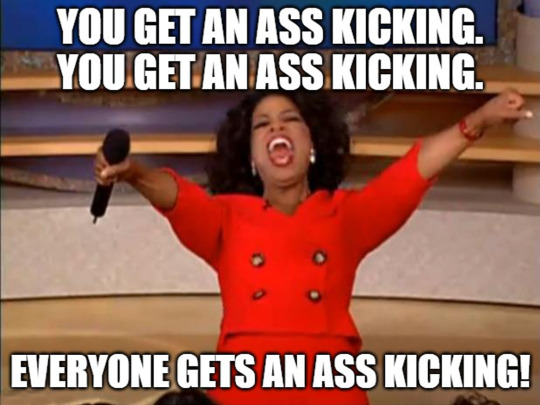
Note:
1) The Buddha states that the scriptures of the Great Vehicle are "for the cultivation of immortality; they are the gate to ultimate virtue" (Wu & Yu, vol. 1, p. 205).
Source:
Wu, C., & Yu, A. C. (2012). The Journey to the West (Vols. 1-4) (Rev. ed.) Chicago, Ill: University of Chicago Press.
#Sun Wukong#Monkey King#Journey to the West#story idea#Lego Monkie Kid#LMK#scriptures#JTTW#demons#spirits#thunder and lightning#army#epic battle
57 notes
·
View notes
Text

Japón y su prehistoria, a través de los hallazgos arqueológicos, sean bienvenidos a una nueva entrega, un tanto especial, de noticias arqueológicas japonesas que iremos comentando en los siguientes capítulos y les hablaré de unas noticias que les sorprenderán a todos, por su riqueza arqueológica del país del sol naciente dicho esto empecemos. - En los capítulos anteriores, hablamos sobre un hombre que recibió 800 mordeduras de tiburón, del hallazgo de un espejo de bronce y en el anterior hablamos de un tesoro del siglo xv que fue enterrado durante la guerra civil japonesa. - En esta ocasión, nos volvemos a trasladar a la prehistoria nipona, pero en este caso ¿Cuáles son los orígenes de la población japonesa actual?, hace un tiempo hablamos un poco muy por encima del hombre de Minatogawa, ya era hora de dedicarle unas publicaciones a este homínido. - Los arqueólogos japoneses encontraron unos fragmentos humanos localizados en la isla de Ishigaki, los cuales tienen una antigüedad de 24 000 años, lo que le convierte en el yacimiento más antiguo de Japón y en uno de los mayores de Asia. ¿Conocían este hallazgo? ¿Y el yacimiento?. La cueva pudo tener función de enterramiento, esto lo podemos ver en casos en Europa y otras partes del mundo. - Esta noticia va a estar dividida en unos cuantos sub apartados, ya que hace poco salieron nuevos estudios, además hablaremos de unas cuantas cositas de este yacimiento, así que nos vemos en los próximos capítulos en los cuales aclararemos muchas de estas incógnitas sobre la arqueología e historia japonesa. - Japan and its prehistory, through archaeological finds, welcome to a new installment, somewhat special, of Japanese archaeological news that we will comment on in the following chapters and I will tell you about some news that will surprise everyone, due to its archaeological richness from the country of the rising sun having said that let's begin. - In the previous chapters, we talked about a man who received 800 shark bites, the discovery of a bronze mirror, and in the previous one we talked about a 15th century treasure that was buried during the Japanese civil war. - On this occasion, we return to Japanese prehistory, but in this case, what are the origins of the current Japanese population? Some time ago we spoke a little above Minatogawa man, it was time to dedicate some publications to him to this hominid. - Japanese archaeologists found some human fragments located on the island of Ishigaki, which are 24,000 years old, making it the oldest site in Japan and one of the largest in Asia. Did you know about this find? And the deposit? The cave could have had a burial function, we can see this in cases in Europe and other parts of the world. - This news is going to be divided into a few sub-sections, since recently new studies came out, we will also talk about a few things about this site, so see you in the next chapters in which we will clarify many of these unknowns about archeology and Japanese history. - 日本とその先史時代は、考古学的発見を通じて、次の章でコメントする日本の考古学ニュースの新しい記事へようこそ。その考古学的な豊かさのために、みんなを驚かせるいくつかのニュースについてお話します。さあ、始めようと言った昇る太陽の国。 - 前の章では、800匹のサメに刺された男性、銅鏡の発見について話しました。前の章では、日本の内戦中に埋葬された15世紀の宝物について話しました。 - この機会に、日本の先史時代に戻りますが、この場合、現在の日本人の起源は何ですか?少し前に、港川人の少し上で話をしましたが、この類人猿にいくつかの出版物を捧げる時が来ました。 - 日本の考古学者は、石垣島にある24,000年前の人間の断片を発見しました。これは、日本で最も古い場所であり、アジアで最大の場所の1つです。この発見について知っていましたか?そして預金?洞窟は埋葬機能を持っていた可能性があります。これはヨーロッパや世界の他の地域の事例で見ることができます。 - このニュースはいくつかのサブセクションに分けられます。最近新しい研究が発表されたので、このサイトについてもいくつか話します。次の章で、これらの未知数の多くを明らかにします。考古学と日本の歴史。
25 notes
·
View notes